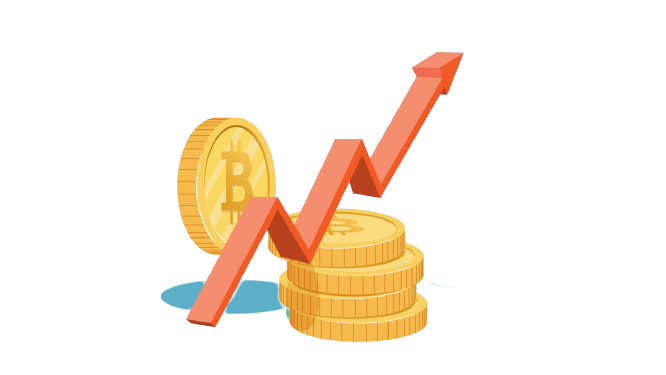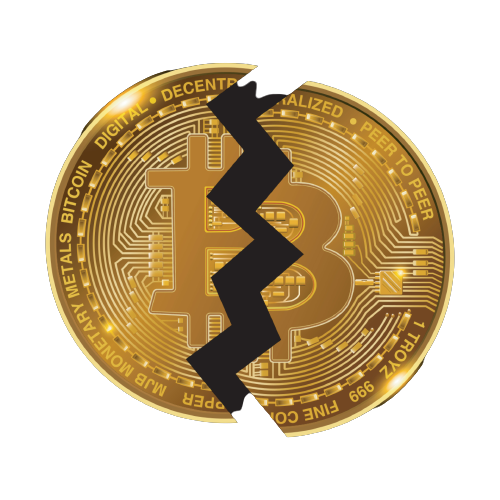
Bitcoin halving is a fundamental event in the Bitcoin network that occurs approximately every four years (or after every 210,000 blocks). During a halving, the block reward for miners is reduced by half. The block reward is the incentive given to miners for validating transactions and adding them to the blockchain. In the early days of Bitcoin, this reward was 50 BTC per block. However, due to the halving mechanism, the reward decreases over time.
The purpose of halving is to control the issuance of new Bitcoins and ensure a limited supply. By halving the reward, Bitcoin’s inflation rate decreases, and its scarcity is enhanced. This scarcity is a key feature of Bitcoin’s value proposition, as it contrasts with traditional fiat currencies that can be printed without limit.
Historical Context Of Previous Halvings – Know This To Understand The Depth!
First Halving (2012): The first halving took place on November 28, 2012. The block reward was reduced from 50 BTC to 25 BTC. Following this halving, Bitcoin’s price saw a significant increase, although the market was still relatively young and less mature.
Second Halving (2016): The second halving occurred on July 9, 2016. The block reward was further reduced to 12.5 BTC. This halving event attracted more attention from media and investors, and it marked the beginning of a substantial bull market that led to Bitcoin’s all-time high price in December 2017.
Impact Of Halving On Bitcoin’s Supply And Mining Rewards
Supply Scarcity: One of the most significant impacts of halving is the reduction in the rate of new Bitcoin supply entering the market. With each halving, the rate of issuance decreases, making Bitcoin scarcer over time. This scarcity is often cited as a reason for potential price appreciation.
Mining Economics: Miners play a crucial role in the Bitcoin network’s security and validation process. Halving affects their revenue as the block rewards they receive are reduced. Miners need to adapt to the reduced income, which can influence the network’s hash rate (computing power) and mining difficulty. Miners with higher operational costs may be pushed out of the market, leading to potential centralization concerns.
Price Speculation: The anticipation of reduced supply due to halving events can create a sense of scarcity-driven demand among investors. This speculation can contribute to short-term price increases before and after halving events. However, it’s important to note that price movements are influenced by a multitude of factors, and halving is just one of them.
Market Sentiment: Halving events often generate media coverage, which can affect market sentiment. Positive sentiment and FOMO can attract new investors looking to capitalize on potential gains. Conversely, negative sentiment could lead to sell-offs if the expected price increase does not materialize immediately.
Why You Should Buy Bitcoin Before Halving?
A. Potential for Price Appreciation

Historical Price Performance after Halvings: Previous halving events have historically been associated with significant price rallies in the months and years that followed. Both the first and second halvings were followed by substantial increases in Bitcoin’s price. While history doesn’t guarantee future results, the pattern of reduced supply and increased demand leading to price appreciation is a compelling reason for some investors to consider buying before a halving.
Speculation on Scarcity Driving Up Prices: Bitcoin’s supply is capped at 21 million coins, and halvings further slow down the rate of new supply entering the market. As basic economics dictates, when demand remains constant or increases while supply decreases, the price tends to rise. This scarcity-driven narrative fuels speculation that halving events could lead to increased demand and, consequently, price appreciation.
B. Long-Term Investment Opportunity
Bitcoin’s Store of Value Narrative: Bitcoin’s decentralized and limited supply nature has led to its reputation as “digital gold” or a store of value. This narrative suggests that Bitcoin could serve as a hedge against inflation and economic uncertainty, similar to how gold has been used historically. Buying before a halving could provide exposure to an asset that has the potential to preserve purchasing power over the long term.
Institutional Interest and Adoption: Over the years, institutional interest in Bitcoin has been growing, with major companies and investment firms allocating funds to Bitcoin. Institutions entering the market can contribute to increased demand and price appreciation. Buying before a halving event may offer exposure to potential institutional buying interest that could drive prices higher.
C. Timing the Market
Investors often try to time the market by buying assets when they perceive them to be undervalued. Some believe that buying Bitcoin before a halving event when there is less supply entering the market, may present an opportunity to purchase at a lower price point compared to after the event when price appreciation might have occurred.
While timing the market can potentially lead to favorable purchases, it’s important to recognize the inherent risks. Cryptocurrency markets are known for their volatility, and attempting to predict short-term price movements can be challenging. Mistiming the market could lead to missed opportunities or losses if prices don’t align with expectations.
Buying Bitcoin before a halving is a decision that requires careful consideration of the potential benefits and risks. While historical trends and economic principles suggest a potential for price appreciation due to reduced supply and increased demand, it’s important to approach such investments with a long-term perspective. Factors like Bitcoin’s store of value narrative and institutional adoption can add to the appeal, but investors should be aware of the speculative nature of cryptocurrency investments and the inherent risks involved. Diversification, research, and understanding your risk tolerance are essential when considering any investment, including Bitcoin.
Cons Of Buying Bitcoin Before Halving
A. Short-Term Volatility
Historical Instances of Price Fluctuations: Bitcoin’s price has been known to exhibit significant short-term volatility, often resulting in rapid price swings. While halving events are associated with potential price appreciation, they can also trigger heightened volatility as the market reacts to the event. Investors buying before a halving should be prepared for short-term price fluctuations that might not align with their expectations.
Emotional Stress on Investors: The roller-coaster nature of Bitcoin’s price can lead to emotional stress for investors. Sudden price drops or surges can evoke fear, uncertainty, and doubt, causing some investors to make impulsive decisions that might not align with their long-term investment goals.
B. Market Manipulation:=
Large holders of Bitcoin, often referred to as “whales,” have the ability to influence the market due to their significant holdings. These whales can strategically execute large buy or sell orders, creating artificial price movements that might not reflect the market’s true sentiment. Such manipulation can mislead retail investors and impact their investment decisions.
The anticipation of price appreciation around halving events can attract malicious actors who orchestrate pump-and-dump schemes. They artificially inflate the price of Bitcoin by spreading hype and attracting investors, only to sell off their holdings at the peak, causing a sharp price decline. These schemes exploit the market sentiment surrounding halving events.
C. Regulatory Uncertainty
The regulatory environment for cryptocurrencies is evolving and can vary greatly from one jurisdiction to another. Governments and regulatory bodies might introduce new rules or restrictions that could impact the use, trading, or legality of Bitcoin. Such regulatory changes can lead to uncertainty and affect market sentiment.
Regulatory uncertainty can create hesitation among investors, particularly institutional ones, who are concerned about compliance and legal risks. Adverse regulatory news can lead to negative market sentiment, triggering sell-offs and price declines.
Expert Opinions And Predictions
A. Insights from Prominent Figures in the Cryptocurrency Space
Prominent figures in the cryptocurrency space, including entrepreneurs, investors, analysts, and developers, often share their insights on the potential impact of Bitcoin halving events. These insights can provide valuable perspectives on market trends, technological developments, and the broader implications of halvings. For instance:
Crypto Pioneers: Figures like Satoshi Nakamoto, the creator of Bitcoin, laid the groundwork for the first halvings and their intended effects on the network’s supply and economics.
Cryptocurrency Analysts: Experts like Andreas Antonopoulos and Willy Woo often analyze the technical and economic aspects of halvings, offering insights on potential price movements, network effects, and investor behavior.
Market Commentators: Well-known investors such as Tim Draper, Mike Novogratz, and Chamath Palihapitiya often share their predictions on how halvings might impact Bitcoin’s value and the broader cryptocurrency market.
B. Analysis of Differing Viewpoints on Halving’s Impact

There are differing viewpoints within the cryptocurrency community about the impact of halving events. These viewpoints reflect the complexity of the market and the various factors that can influence price movements and adoption:
Bullish Viewpoints: Some experts argue that historical patterns and economic principles support the notion that reduced supply due to halvings will lead to price appreciation. They point to previous halving events as evidence of this trend continuing.
Bearish Viewpoints: Others caution against assuming a direct causal relationship between halvings and price increases. They highlight that other market factors, such as macroeconomic trends and technological developments, also play significant roles in determining price movements.
C. The Importance of Critical Thinking and Independent Analysis
When considering expert opinions and predictions about Bitcoin halvings, it’s essential to exercise critical thinking and independent analysis. Here’s why:
Complexity of Factors: The cryptocurrency market is influenced by a multitude of factors, including market sentiment, macroeconomic trends, technological advancements, regulatory changes, and more. Halvings are just one piece of the puzzle.
Bias and Hype: Even experts can be influenced by personal biases, emotional attachments, or the desire to attract attention. It’s important to critically evaluate the reasoning behind their predictions.
Unforeseen Events: The future is inherently uncertain, and unforeseen events can disrupt even the most well-reasoned predictions. Investors should be prepared for unexpected developments that might impact the market.
Conclusion
Bitcoin halving is a significant event that affects both the technical and economic aspects of the network. While halving events can contribute to short-term price volatility, their true long-term effects on Bitcoin’s value are still subject to ongoing debates and market dynamics.
Buying Bitcoin before a halving is a decision that requires careful consideration of the potential benefits and risks. While historical trends and economic principles suggest a potential for price appreciation due to reduced supply and increased demand, it’s important to approach such investments with a long-term perspective. Factors like Bitcoin’s store of value narrative and institutional adoption can add to the appeal, but investors should be aware of the speculative nature of cryptocurrency investments and the inherent risks involved. Diversification, research, and understanding your risk tolerance are essential when considering any investment, including Bitcoin.
It’s important to note that while there are potential risks associated with buying Bitcoin before a halving, they do not definitively predict the outcome. Investing in Bitcoin, like any investment, involves a degree of risk, and it’s crucial for investors to be well-informed, have a clear risk tolerance, and consider the potential downsides alongside the potential benefits. Careful research, risk management strategies, and a long-term perspective are essential when navigating the volatile and dynamic cryptocurrency market.
In conclusion, expert opinions and predictions provide valuable insights into the potential impact of Bitcoin halvings. However, investors should approach these opinions with a balanced perspective, considering both bullish and bearish viewpoints. Critical thinking, independent analysis and a well-rounded understanding of the broader cryptocurrency landscape are crucial for making informed investment decisions. Remember that the cryptocurrency market is highly dynamic, and the outcome of halvings and their effects on Bitcoin’s price is subject to a wide range of variables.